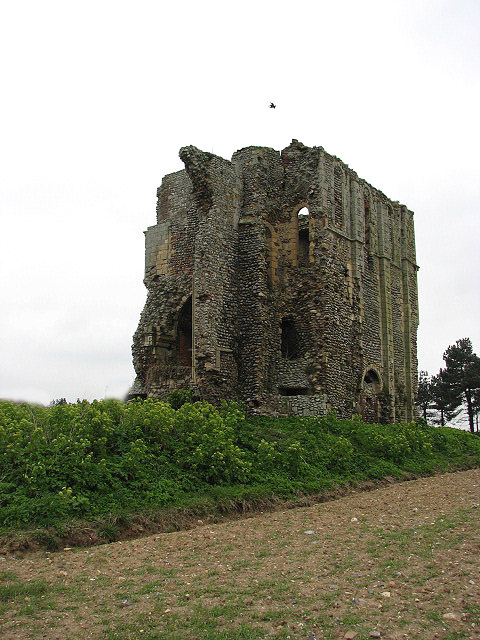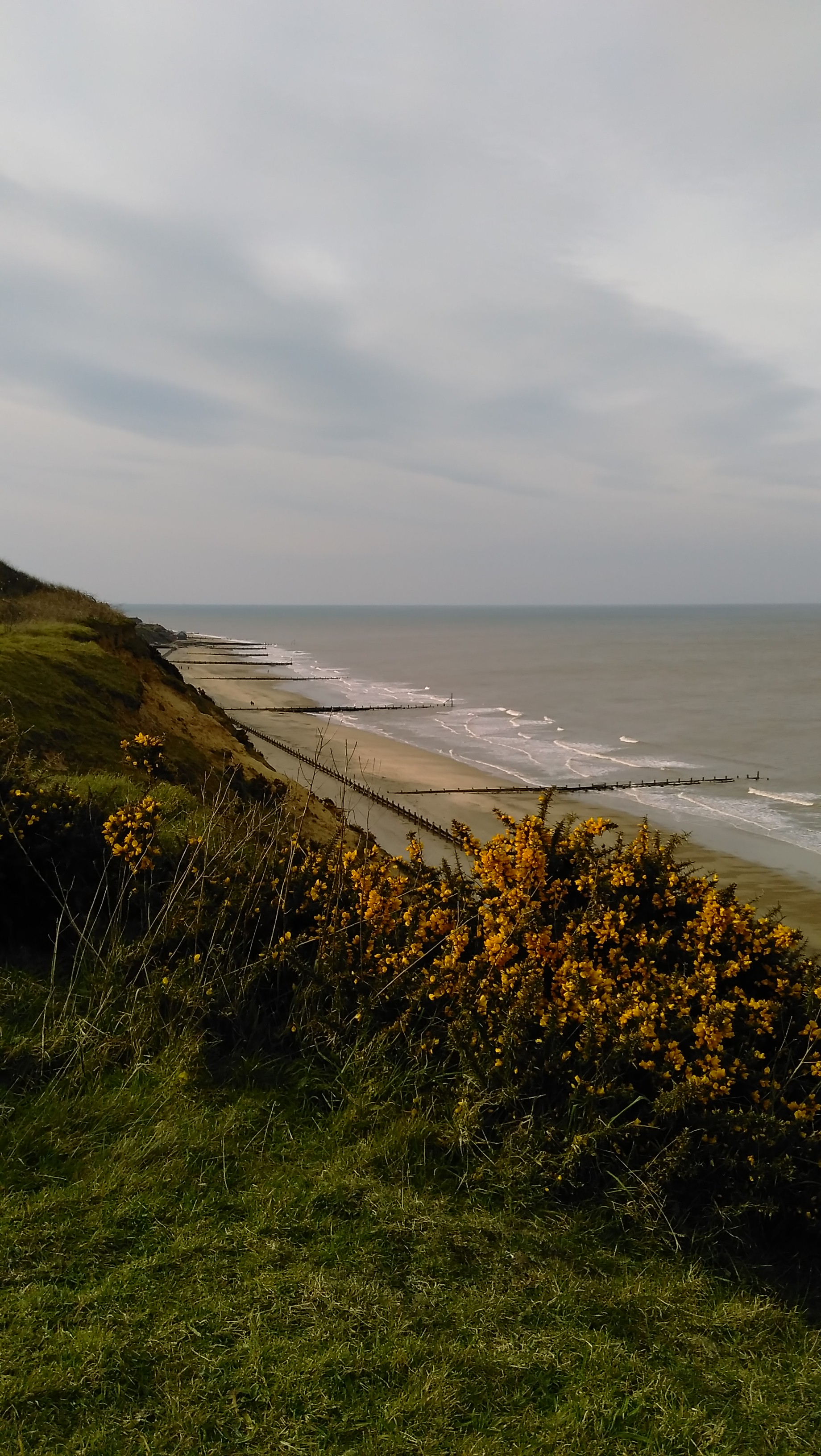|
Bromholm Priory
Bromholm Priory was a Cluniac priory, situated in a coastal location near the village of Bacton, Norfolk, England History Bromholm Priory, also known as Bacton Abbey, was founded in 1113 by William de Glanville, Lord of Bacton, and was originally subordinate to Castle Acre Priory until 1195 when it was exempted by Pope Celestine III. King Henry III visited the priory in 1223 to take the holy waters and dedicate to the relics; lands nearby were controlled by the all-powerful Justiciar Hubert de Burgh. From this priory we have the Bromholm Psalter dated to the early fourteenth century. The priory was suppressed in 1536. All that now remains are the ruins of the gatehouse, Chapter House, and the northern transept of the Priory Church. It was an important object of pilgrimage as it claimed to possess a piece of the True Cross, mentioned as the 'holy cross of Bromeholme' in Chaucer's ''The Reeve's Tale'' and William Langland's ''Vision of Piers Plowman''. It was a benefice of ... [...More Info...] [...Related Items...] OR: [Wikipedia] [Google] [Baidu] |
Broomholm Priory - Geograph
Bacton is a village and civil parish in Norfolk, England. It is on the Norfolk coast, some south-east of Cromer, north-west of Great Yarmouth and north of Norwich. Besides the village of Bacton, the parish includes the nearby settlements of Bacton Green, Broomholm, Keswick and Pollard Street. It also includes Edingthorpe, which was added to Bacton civil parish under the County of Norfolk Review Order, 1935. The seaside village, whose name is derived from 'Bacca's farm/settlement', is located on the North Norfolk coast between Mundesley (a blue flag beach) and Walcott, Norfolk. Bacton is known for its very quiet sandy beaches offering miles of walking along the beach and cliffs. The England Coast Path passes through the village and also the Paston Way long-distance footpath linking Cromer and North Walsham. In the east of the parish can be found the ruined Cluniac Bromholm Priory. The civil parish has an area of and in the 2001 census had a population of 1,130 in 474 ho ... [...More Info...] [...Related Items...] OR: [Wikipedia] [Google] [Baidu] |
William Langland
William Langland (; la, Willielmus de Langland; 1332 – c. 1386) is the presumed author of a work of Middle English alliterative verse generally known as ''Piers Plowman'', an allegory with a complex variety of religious themes. The poem translated the language and concepts of the cloister into symbols and images that could be understood by a layman. Life Little is known of Langland himself. It seems that he was born in the West Midlands of England around 1330, according to internal evidence in ''Piers Plowman''. The narrator in ''Piers Plowman'' receives his first vision while sleeping in the Malvern Hills (between Herefordshire and Worcestershire), which suggests some connection to the area. The dialect of the poem is also consistent with this part of the country. ''Piers Plowman'' was written ''c.'' 1377, as the character's imagination says he has followed him for "five and forty winters." A fifteenth-century note in the Dublin manuscript of ''Piers Plowman'' says ... [...More Info...] [...Related Items...] OR: [Wikipedia] [Google] [Baidu] |
Grade I Listed Buildings In Norfolk
The county of Norfolk is divided into seven districts, namely Norwich, South Norfolk, Great Yarmouth, Broadland, North Norfolk, King's Lynn and West Norfolk, and Breckland. As there are 540 Grade I listed buildings in the county they have been split into separate lists for each district. * Grade I listed buildings in Breckland * Grade I listed buildings in Broadland * Grade I listed buildings in Great Yarmouth * Grade I listed buildings in King's Lynn and West Norfolk * Grade I listed buildings in North Norfolk * Grade I listed buildings in Norwich * Grade I listed buildings in South Norfolk See also * :Grade I listed buildings in Norfolk * Grade II* listed buildings in Norfolk The county of Norfolk is divided into seven districts. The districts of Norfolk are Norwich, South Norfolk, Great Yarmouth, Broadland, North Norfolk, King's Lynn and West Norfolk, and Breckland. As there are 839 Grade II* listed buildings ... References [...More Info...] [...Related Items...] OR: [Wikipedia] [Google] [Baidu] |
Religious Organizations Established In The 1110s
Religion is usually defined as a social-cultural system of designated behaviors and practices, morals, beliefs, worldviews, texts, sanctified places, prophecies, ethics, or organizations, that generally relates humanity to supernatural, transcendental, and spiritual elements; however, there is no scholarly consensus over what precisely constitutes a religion. Different religions may or may not contain various elements ranging from the divine, sacred things, faith,Tillich, P. (1957) ''Dynamics of faith''. Harper Perennial; (p. 1). a supernatural being or supernatural beings or "some sort of ultimacy and transcendence that will provide norms and power for the rest of life". Religious practices may include rituals, sermons, commemoration or veneration (of deities or saints), sacrifices, festivals, feasts, trances, initiations, funerary services, matrimonial services, meditation, prayer, music, art, dance, public service, or other aspects of human culture. Religions have sa ... [...More Info...] [...Related Items...] OR: [Wikipedia] [Google] [Baidu] |


